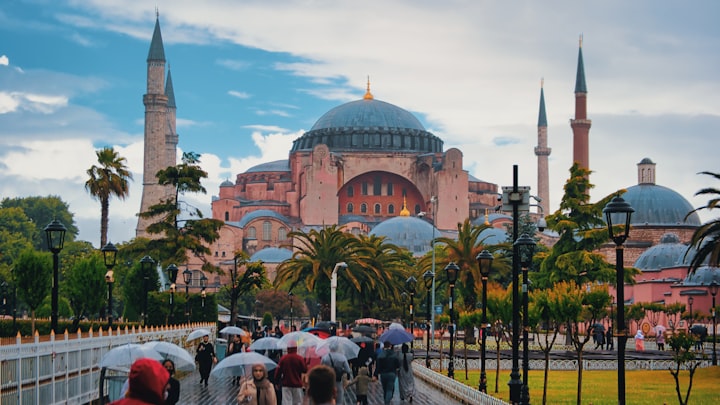Istunbul great historic city with thousands of years
istunbul

Istanbul, Türkiye's largest city, has a captivating history spanning thousands of years. From its ancient origins to its status as a modern metropolis, Istanbul has seen the rise and fall of empires, the amalgamation of cultures and the formation of civilizations. . This article provides a condensed history of Istanbul in about 900 words.
Ancient Origins:
The area where present-day Istanbul is located has been inhabited since prehistoric times. Excavations have unearthed traces of human settlement dating back to the Neolithic period (about 6500 BC). However, the city's history really begins in the 7th century BC when Greek settlers from Megara founded a trading colony called Byzantium on the European side of the Bosphorus.
Roman Period and Byzantine Empire:
In 196 AD, Byzantium was conquered by the Roman Empire, gradually turning the city into a thriving commercial center. However, it was during the reign of Emperor Constantine the Great that Byzantium gained its true meaning. In 330 C.E., Constantine renamed the city Constantinople and made it the new capital of the Roman Empire. The city flourished as the center of the Eastern Roman Empire, which later became known as the Byzantine Empire. The Byzantine period of Constantinople saw significant cultural, political and architectural developments. The Byzantines built magnificent structures, including the famous Hagia Sophia, and Constantinople became a major center of commerce, religion, and learning.
Crusades and Ottoman conquests:
In 1204, Constantinople faced a devastating event during the Fourth Crusade. Crusaders from Western Europe captured and sacked the city, leading to the establishment of the Latin Empire. However, Byzantine rule was restored in 1261. The Ottoman Turks, under the leadership of Mehmed the Conqueror, besieged Constantinople in 1453. After a fierce battle, the city fell to the Ottomans, marking the end of the Byzantine Empire and the beginning. a new era. The Ottomans recognized the importance of the city and made it the capital of their empire. Constantinople was renamed Istanbul and became a center of Islamic civilization, uniting the Turkish, Persian, Arab, and Byzantine cultures.
Ottoman Türkiye:
During the Ottoman period, Istanbul underwent significant cultural and architectural transformations. Magnificent mosques, such as the Süleymaniye Mosque and the Blue Mosque, as well as lavish palaces and public buildings were built. The Ottoman Empire reached its peak under rulers such as Suleiman the Magnificent, who oversaw vast territorial expansion.
Istanbul was once an important trade center between Europe and Asia, making it an important link in the Silk Road. The city flourished economically, attracting merchants from many parts of the world. Istanbul has become a melting pot of different cultures and religions, hosting diverse communities and building a reputation as an international hub. Transition to the Republic of Türkiye:
After World War I and the fall of the Ottoman Empire, Istanbul underwent significant changes. Mustafa Kemal Atatürk led the Turkish War of Independence and founded the Turkish Republic in 1923. Atatürk embarked on an ambitious modernization program and moved the capital to Ankara. However, Istanbul retains cultural and economic importance.
During the 20th century, Istanbul experienced rapid urbanization and industrialization. The city's skyline has been changed with the construction of modern buildings, bridges and highways. Despite these changes, Istanbul's historic legacy is preserved and celebrated, with efforts aimed at preserving its architectural legacy.
Contemporary Istanbul:
Today, Istanbul presents itself as a vibrant and dynamic city, combining rich history with a modern outlook. It serves as the economic, cultural and financial center of Türkiye. The city's unique location between Europe and Asia continues to shape its character, attracting visitors from all over the world. Iconic landmarks of Istanbul such as Hagia Sophia, Topkapi Palace and Grand Bazaar attract millions of tourists every year. The city is vibrant with life, offering a vibrant food scene, bustling markets and a thriving arts and music scene.
In short, the history of Istanbul is a tapestry woven with the threads of ancient civilizations, empires and cultural exchanges. From its Greek roots of Byzantium to the Roman and Byzantine eras, from the conquest of the Ottoman Empire to its modern status as a bustling metropolis, Istanbul remains a city that embodies the spirit of the past in while embracing the promise of the future.
About the Creator
Reader insights
Nice work
Very well written. Keep up the good work!
Top insight
Eye opening
Niche topic & fresh perspectives





Comments (1)
I like this piece :)